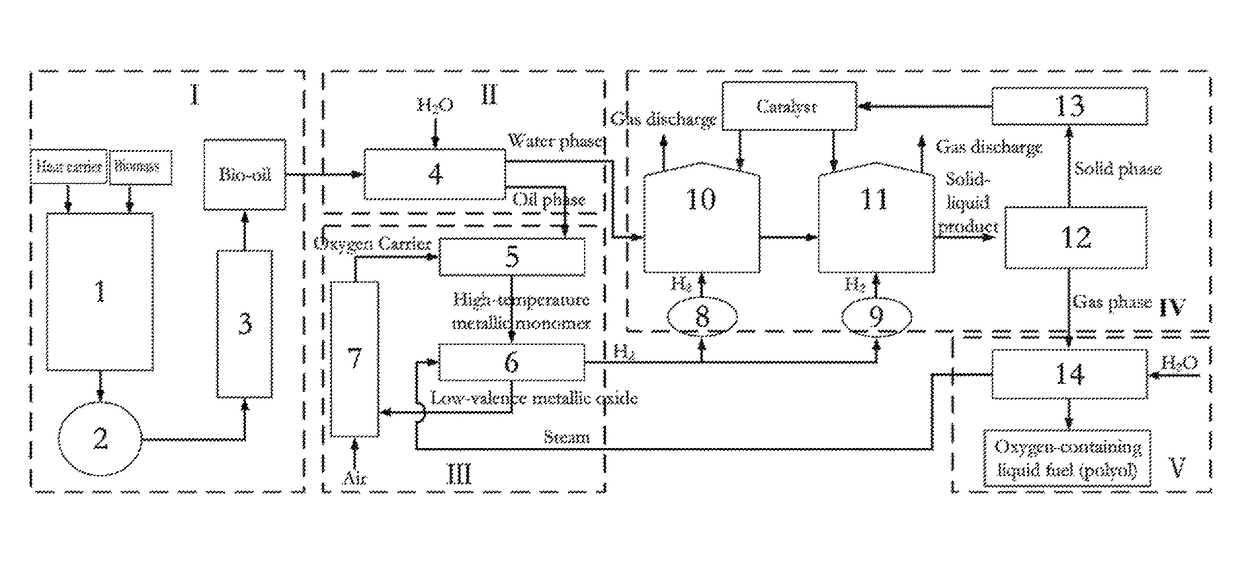Device and method for preparing oxygen-containing liquid fuel by bio-oil catalytic conversion
a technology of liquid fuel and catalytic conversion, which is applied in the direction of biofuels, fuels, products, etc., can solve the problems of affecting the application range of oil, fundamentally changing the shortcomings of bio-oil, and high oxygen content, and achieves low cost of the process, high liquid yield, and easy condensation
- Summary
- Abstract
- Description
- Claims
- Application Information
AI Technical Summary
Benefits of technology
Problems solved by technology
Method used
Image
Examples
Embodiment Construction
[0034]Below the present invention will be described by referring to the accompanying drawing.
[0035]The present invention provides a method and device for preparing oxygen-containing liquid fuel by catalytic conversion of bio-oil. The method firstly prepares oil from biomass by thermal cracking, separates the water-phase and oil-phase of the obtained bio-oil, produces hydrogen from the oil-phase bio-oil by a chemical chain method to provide a “hydrogen source” for the water-phase bio-oil to carry out two-step catalytic hydrogenation in a slurry bed and directly separates and purifies a hydrogenated product (polyol compound) to obtain oxygen-containing liquid fuel. The device comprises a biomass fast thermal cracker 1, a gas-solid separator 2, a fast condenser 3, an oil-water separator 4, a reduction reactor 5, a steam hydrogen generator 6, an air reactor 7, a first compressor 8, a second compressor 9, a slurry bed low-temperature catalytic hydrogenation reactor 10, a slurry bed high-...
PUM
| Property | Measurement | Unit |
|---|---|---|
| pressure | aaaaa | aaaaa |
| temperature | aaaaa | aaaaa |
| pressure | aaaaa | aaaaa |
Abstract
Description
Claims
Application Information
 Login to View More
Login to View More - R&D
- Intellectual Property
- Life Sciences
- Materials
- Tech Scout
- Unparalleled Data Quality
- Higher Quality Content
- 60% Fewer Hallucinations
Browse by: Latest US Patents, China's latest patents, Technical Efficacy Thesaurus, Application Domain, Technology Topic, Popular Technical Reports.
© 2025 PatSnap. All rights reserved.Legal|Privacy policy|Modern Slavery Act Transparency Statement|Sitemap|About US| Contact US: help@patsnap.com


